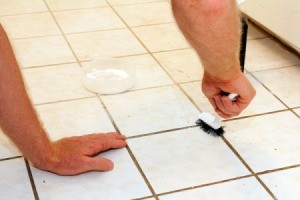 You can purchase 3% hydrogen peroxide over the counter just about everywhere, and it's inexpensive and much safer for all of us and our environment than using chlorine bleach! Here is a list of a few of my tried and true uses. Please remember that it must be stored in a cool dark place to keep from quickly breaking down and becoming ineffective.
You can purchase 3% hydrogen peroxide over the counter just about everywhere, and it's inexpensive and much safer for all of us and our environment than using chlorine bleach! Here is a list of a few of my tried and true uses. Please remember that it must be stored in a cool dark place to keep from quickly breaking down and becoming ineffective.
Brightening: Of course, as a retired hairstylist after 35 years, here is my favorite little secret tip for a natural sun kissed lightening for your hair. This will work on all natural hair colors (and even bottle color that turned out too dark), but works the best on lighter shades of brunette and blond. This formula lightens gradually, so it will not be an overnight shock change. Simply spray a 50/50 solution of hydrogen peroxide on your wet hair after getting out of the shower, comb it through, and dry.
General Sanitizing: Hydrogen Peroxide is an approved sanitizer, so use it to clean germs from counter tops, tabletops, toilet seats, etc. by generously spraying a 50/50 solution of hydrogen peroxide and water directly on the surface and wiping off with a damp rag. This also works for controlling mold in tubs and/or showers. Use full strength on cutting boards after rinsing the board to kill salmonella.
Fabric Care: Use a cup of hydrogen peroxide instead of chlorine bleach in your white wash load for brightening. Not only will our environment thank you, but your fabrics will too. If there are blood stains or other spot stains on your fabrics, pre-treat by pouring a little peroxide on the spot, leave for a minute, rub fabric together, and rinse in cold water (repeat if needed, but it usually works on the first try). To remove yellowing from fabrics, fill a sink with cold water and add a couple cups of hydrogen peroxide, soak for about an hour, rinse in cold water, and wash as usual. Be careful to do a test for color fastness in an inconspicuous spot first on all fabrics!
Foot Fungus: Use a 50/50 mixture of hydrogen peroxide and water to help foot fungus. Wash feet first, dry, spray on mixture even between the toes, and allow air dry every day.
By Deeli from Richland, WA
This page contains the following solutions.
My best cleaning tip is hydrogen peroxide. I put it in a spray bottle and clean everything in my bathroom from sinks to toilets, chrome, and mirrors. It also sanitizes and kills germs.
Many years ago a vet tech suggested using hydrogen peroxide to remove pet odors from carpet, rather than buying the all too expensive store bought cleaners. I gave it a try and have been hooked ever since.
If you have a microfiber couch that has spots or water marks, but can't remove them, try hydrogen peroxide. Dampen the area with a cloth, let dry, and brush with a soft brush. It cleans and leaves no stain.
My daughter's cat urinated on an expensive marble fireplace slab. She poured hydrogen peroxide on the areas involved, left the liquid until it soaked in to dissolve the urine stains.
Hydrogen peroxide works good to clean stains on counters and also stains in bathtubs.
If treated before before they set blood stains can generally be removed. This is a page about removing blood stains from clothing and fabric.
Whiten your laundry with hydrogen peroxide rather than bleach. It also works particularly well on protein stains such as blood. This is a page about using peroxide for laundry whitening.
Hydrogen peroxide is especially good for organic stains and is very gentle on carpet. This is a page about using hydrogen peroxide for carpet stains.
This is a page about using hydrogen peroxide for cleaning dentures. Hydrogen peroxide is a good cleaner for dentures, and a product many of us already have in the medicine cabinet.
This is a page about cleaning suede boots with hydrogen peroxide. Hydrogen peroxide can be used as an inexpensive suede cleaner.
ThriftyFun is one of the longest running frugal living communities on the Internet. These are archives of older discussions.
Hydrogen Peroxide works well for cleaning cuts, so it should be no surprise that it is effective for blood stains.